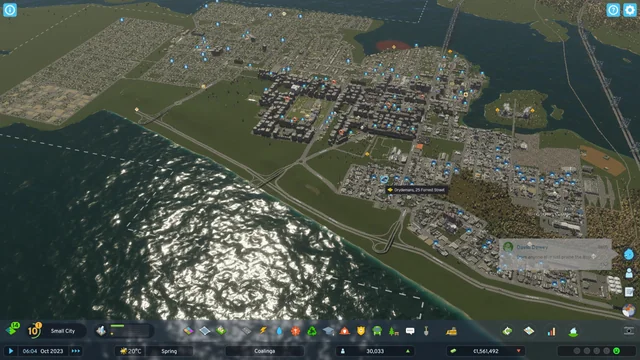Cities Skylines 2 is a popular city-building simulation game where players can create and manage their own city.
One of the challenges that players face is managing the demand for low-density residential housing.
If you’re struggling to keep up with the demand, don’t worry, you’re not alone.
In this article, we will explore some effective strategies to reduce the demand for low-density residential housing in Cities Skylines 2.
By following these tips, you can create a more balanced and sustainable city that meets the needs of your citizens.

How To Fix Cities Skylines 2 Low-Density Residential: How To Reduce Housing Demand?
1. Shift Your Focus
One important strategy to reduce the demand for low-density residential housing in Cities Skylines 2 is to shift your focus from treating the meter as what’s needed to treating it as what’s possible.
In other words, don’t just build low-density residential housing because the demand meter says you need it.
Instead, focus on building a variety of housing types and densities that meet the needs of your citizens while also taking into account the available land and resources.
By building more high-density residential areas, you can create a more diverse and attractive city that meets the needs of a wider range of citizens.
This will also help to reduce the demand for low-density residential housing, as citizens will have more options to choose from.
So, don’t just focus on meeting the demand meter for low-density housing – focus on creating a balanced and sustainable city that meets the needs of your citizens while also taking into account the available land and resources.
2. Build High-Density Residential Areas
One of the most effective ways to reduce the demand for low-density residential housing is to build high-density residential areas.
High-density residential buildings can house more citizens in a smaller area, which means that you can meet the housing demand without sacrificing valuable land.
3. Increase Education Levels
Education plays a crucial role in reducing the demand for low-density residential housing.
Citizens with higher education levels tend to prefer living in high-density residential areas, which means that you can reduce the demand for low-density housing by increasing the education levels of your citizens.
4. Increase Land Value
Increasing the land value of your city can also help to reduce the demand for low-density residential housing.
Citizens are more likely to live in high-density residential areas if the land value is high, which means that you can reduce the demand for low-density housing by increasing the land value of your city.
5. Improve Public Transportation
Improving public transportation in your city can also help to reduce the demand for low-density residential housing.
If citizens have easy access to public transportation, they are more likely to live in high-density residential areas, which means that you can reduce the demand for low-density housing by improving public transportation.
6. Reduce Taxes
Finally, reducing taxes on high-density residential buildings can also help to reduce the demand for low-density residential housing.
Citizens are more likely to live in high-density residential areas if the taxes are lower, which means that you can reduce the demand for low-density housing by reducing taxes on high-density residential buildings.
If you are still facing difficulties in getting rid of the above issue then you may contact the Cities Skylines 2 customer support by clicking here. They will guide you with better options.

